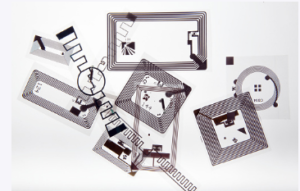Radio Frequency Identification, or RFID for short, is a system of tags and readers utilising low-power radio frequencies to uniquely identify items and transmit data. Similar to barcode technology but more reliable since tags don’t need line-of-sight between themselves and their reader, they can remain active without batteries for years.

Embedded tag reader
OEMs can utilise embedded tag readers as an effective way to improve their products and guarantee they remain compliant with engineering specifications. As a result, they offer improved performance, lower costs and extended tag durability without compromising the product’s design or functionality.
RFID tags can store various information, such as serial numbers, barcodes, etc. It enables OEMs to monitor their products throughout the supply chain and collect valuable product details for multiple applications.
RAMPRFID RFID reader offers OEMs additional capabilities, such as the capacity to store configuration, design or date code helpful information when diagnosing and servicing a device. These features help cut down on diagnostic time, enabling customers to get the most from their instruments while increasing the efficiency of their business operations.
An embedded tag reader is a compact, battery-operated device that can read data from an RFID tag or card. These readers are ideal for small spaces or items needing quick reading.
Smart readers can perform functions like processing tag data, making decisions based on what they read, and performing custom tasks directly within the reader platform. While many come pre-programmed as dumb devices, these can be turned into full-fledged smart readers by writing software that unlocks their hidden computing intelligence.
Embedded tag readers are typically made from plastic, rubber or composite materials and moulded into a small area for virtually invisible visibility to the user yet still readable by a RAMPRFID RFID reader. Furthermore, embedded tag readers offer excellent durability by resisting damage due to impact or abrasion while offering extended service life.
Embedded tag readers are ideal for tracking hand tools such as scalpels, wrenches and hammers. They can be placed within the device for optimal use and protection from other objects or debris. Likewise, embedded tag readers have medical and healthcare applications in mind, ensuring patients’ identities and progress throughout their care cycle are accurately tracked.
Shopping cart tag reader
The RFID tag reader is a device used to help consumers track products through radio frequency identification (RFID) tags. These tiny tags contain valuable data about the item they’re attached to, such as its price and expiration date.
RFID tags come in three varieties: active, passive and inductively coupled. Active tags require power from a magnetic field and are ideal for tracking luggage or other items that must be monitored in dense areas. Passive tags rely on reader electricity, making them cheaper to manufacture than active ones.
Inductively coupled tags are powered by an electric current and are usually costlier than passive tags; however, they are much more effective.
Once a customer logs in, they can view their previous shopping list and promotions on the smart shopping cart dashboard. It makes shopping more convenient for them and helps retailers sell more products.
The RFID tag reader uses radio-frequency identification tags to connect with the Internet of Things (IoT). It comprises various electronics and software components, such as an RFID sensor, Arduino microcontroller, Bluetooth modules, and mobile application.
Milk container tag reader
RFID technology for milk containers allows farmers to monitor animal health, enhance milk quality and boost productivity. It also enables them to give customers more precise information about their products’ origins as they move through the supply chain.
RFID tags offer several advantages over barcodes, such as their lack of line of sight requirement that makes them accessible from any distance. Furthermore, these universal symbols can store more data than barcodes and operate in various environments.
An RFID tag’s memory chip can switch from passive RF energy mode, like that found in entirely passive tags, to local charge-assisted power mode, similar to battery-assisted power in semi-passive tags. When glucose was added to electrodes, however, the extra charge created an additional source of energy which kept the tag’s memory chip in this new mode for longer than it otherwise would have stayed there.
